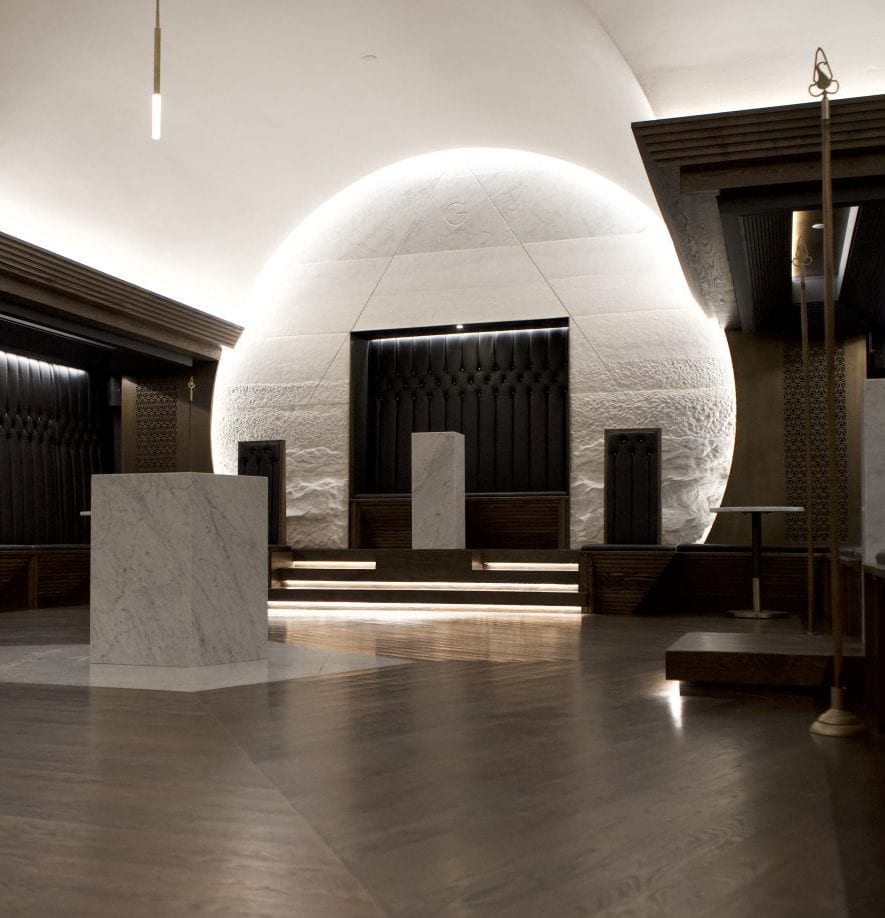
The Forever Home
Finally, the California Masonic Memorial Temple is host to its first dedicated lodge room.

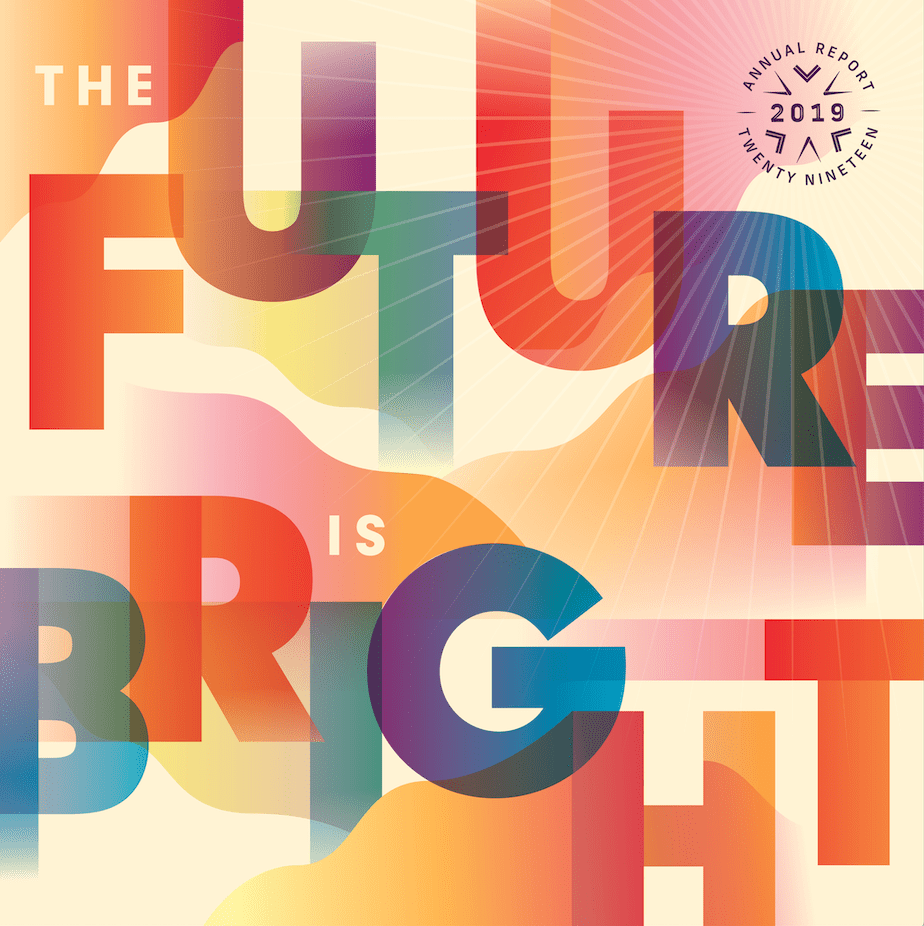
By Ian A. Stewart
For Mark Burger, it all starts with a doorstop. A simple device, low-tech, functional—and for Pacific Grove Lodge No. 331, transformative. In 2019, Burger’s lodge, of which he’s a past master, grew by four new members. It’s a modest gain, but one that’s increasingly common throughout California, where after decades of decline, membership in the fraternity appears poised to turn the corner. And it isn’t an elaborate outreach campaign that’s behind Pacific Grove’s turnaround. It’s the humble doorstop. Because when the doorstop is being put to use, that means the lodge’s doors are open to the world.
“It’s not only symbolic, it’s convenient,” Burger says. “People see that door open and they walk in and start asking questions. That’s how I became a Mason. I was always interested, and I saw the door open and remember thinking, Why not?”
As the fraternity enters a new decade and begins to write the next chapter in its 300-year story, it’s a useful reminder that sometimes the simplest ideas are the most impactful.
That next chapter begins now. For the Masons of California, 2020 is more than just a symbolic bit of numerology. In the coming year, Grand Lodge will transition from its previous five-year roadmap to a new 2025 Fraternity Plan, which will set the course of the entire operation while at the same time developing a long-range vision geared to 2050. During this phase of the fraternity’s development, membership gains will outpace losses by death, demits, and suspension—a shift that’s partly systemic and partly demographic in nature. (During the middle part of the 20th century, the fraternity grew at a breakneck pace. We’re now seeing the last vestiges of that membership boom pass away.)
In raw numbers, this shift won’t represent an enormous change. But the simple act of tilting the balance from red to black has significant consequences, representing a shift in thinking for the entire organization. “What changes when we gain members?” asks Jordan Yelinek, director of member services for Grand Lodge. “In one sense, nothing. This is a 300-year-old tradition we’re talking about. But on the other hand, everything changes.”
But with the eyes of the fraternity trained on the immediate future, it’s instructive to look back at the recent past.
Adopted in 2016 after more than 7,000 interviews with Masons up and down the state, the 2020 Fraternity Plan prepared the organization for the change it’s about to experience. That plan was centered on four key themes, each aimed at enhancing the quality of the Masonic experience rather than boosting the quantity of new members. Those were: providing a rewarding member experience, creating memorable and meaningful degrees for all members, developing strong lodges and halls, and making a positive impact on society.
Says Grand Secretary Allan Casalou, “This was a concept born of our belief that only strong lodges can make engaged Masons, who in turn elevate our fraternity and inspire others to follow their example.”
On all four counts, the fraternity has made meaningful strides—and still has more work to do.
The first theme, rewarding member experiences, is both the broadest and quite possibly the most important element of the plan. Research has shown that lodges that create a deep sense of fraternity and provide rewarding experiences do so by emphasizing the importance of making lifelong friends, continually learning and improving oneself, and having an impact on society. Burger has seen this firsthand in Pacific Grove. “You’re making an investment in people,” he says. “Guys are there looking for a personal experience. They’re looking for a social outlet.”
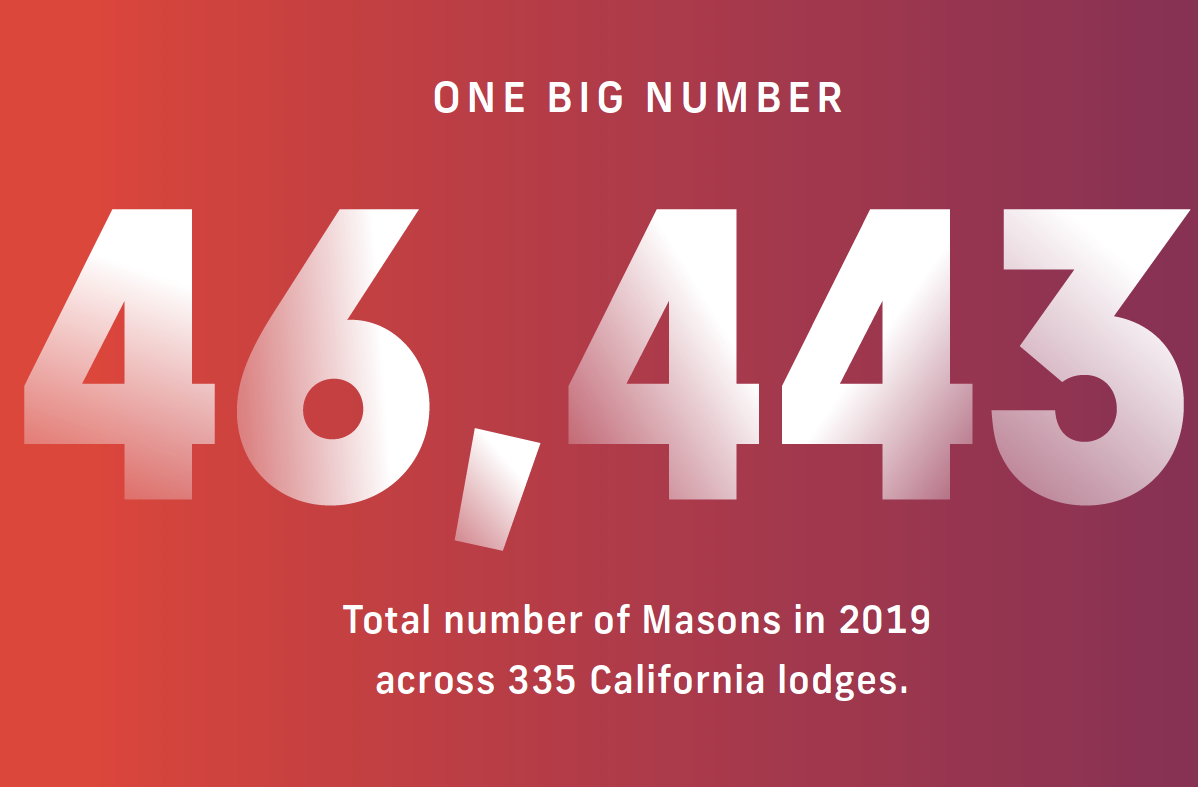 To that end, Grand Lodge focused on providing lodges with resources to help strengthen those bonds: improved prospecting resources online to ensure more prepared and committed initiates come through the door; enhanced leadership retreats with a specific focus on member experience; and new tools to better communicate with fellow members and the wider fraternity. The results have been encouraging.
To that end, Grand Lodge focused on providing lodges with resources to help strengthen those bonds: improved prospecting resources online to ensure more prepared and committed initiates come through the door; enhanced leadership retreats with a specific focus on member experience; and new tools to better communicate with fellow members and the wider fraternity. The results have been encouraging.
Those with an interest in the fraternity like what they see. Since the plan was launched, 82 percent of prospects have converted into applicants. Two-thirds of Entered Apprentices have progressed to Fellow Crafts. And 90 percent of those Fellow Crafts became Master Masons, 97 percent of whom are dues-paying members for life. Among those who fall off, the most commonly cited reason is a lack of connection with their lodge. By providing more varying lodge options for new initiates, we’ll help ensure a better relationship— and more lifelong Masons to carry the craft into the future.
New lodges are springing up to provide more options. Since 2016, 23 new lodges have opened, and 33 more are in the pipeline. In keeping with the forward-looking vision of the fraternity, most of these lodges are intentionally smaller and more intimate, and they carry fewer overhead costs. (Most don’t own the buildings they occupy.) In many cases, they’re in towns that have never had a Masonic presence before.
Since the plan was launched, 82 percent of prospects have converted into applicants. Two-thirds of Entered Apprentices have progressed to Fellow Crafts. And 90 percent of those Fellow Crafts became Master Masons.
And they’re better able to stay in touch: The rollout of the lodge app, centrally managed lodge website templates, and the newly launched californiafreemason.local website— all born of the 2020 plan—provide members with better access to information about their lodge and the fraternity.
The second aim of the 2020 plan was to provide meaningful and memorable degrees to all candidates. Says Grand Lecturer Ricky Lawler, “The ritual is what differentiates the fraternity, so we need to ensure that it’s a central focus moving forward.”
That’s been reinforced through frequent ritual training sessions for officers and officers’ coaches, periodic updates to elements of the ritual, making digital lecture slides available online, and, most significantly, providing improved candidate learning materials. Over the past year, candidates in approximately 80 percent of lodges passed an exam in the online Candidate Learning Center. By providing candidates with more robust training, the fraternity helps them progress through the degrees and form a lifelong bond with Freemasonry.
Part three of the plan involved refocusing the role that the Grand Lodge office plays in the fraternity. Today, staff in San Francisco primarily act as service providers for members and lodges. As a rule, any task that more than 100 Masons are performing statewide can and should be centralized and provided as a service. That’s why things like tax preparation, real estate services, legal assistance, digital communications, dues and membership processing, leadership training, and investment services are all offered under a single roof. “We want to create systems that make life easier for all Masons,” Casalou says. “This is Masonry, not small-business administration. Nobody joined a lodge to manage a building or reconcile a bank statement.”
Lodges are, increasingly, taking advantage of these offerings—freeing themselves to refocus on the parts of Masonry that attracted them in the first place. By far the most utilized of these features is the tax-preparation services, something that 83 percent of California lodges now use. In doing so, Grand Lodge has been able to restore the tax-exempt status of 39 lodges and halls. Another 72 percent of lodges handle their bookkeeping through the centralized Intacct service, and more than 100 lodges have set up websites with templates provided by Grand Lodge.
“All Masons have a desire to contribute to society. It’s critical to involve new members in that... You show them how Masonry can be woven into the fabric of their lives.”
—Mark Burger
Pacific Grove Lodge No. 331
Lastly, the 2020 Fraternity Plan called for opening more pathways to make a positive impact on society. The effect of that is twofold: By fulfilling their obligation to provide for fellow members, their families, and their wider community, members and lodges are better able to live up to their Masonic potential. And by focusing on philanthropy and giving back, lodges create opportunities for initiates to contribute in a meaningful way. “All Masons have a desire to contribute to society,” Burger says. “It’s critical to involve new members in that. You not only provide them with an interesting outlet to participate, but you show them how Masonry can be woven into the fabric of their lives.”
Lodges have continued to spearhead volunteer efforts in their own communities—as seen during the #BlueLodgeChallenge Facebook campaign, continuing what in some cases has been a decades-long tradition of giving back. (For more, see page 6.) In terms of statewide structures, however, this focus has resulted in simplifying the California Masonic Foundation’s mission to focus on two primary issues: supporting childhood education initiatives and expanding services through the Masonic Homes.
By any measure, that has been a success. The Let’s Write the Future fundraising campaign, launched in 2018, aimed to raise $5 million toward two primary aims: strengthening childhood literacy statewide by expanding its partnership with the national Raising A Reader nonprofit, and building a new skilled-nursing and memory-care facility on the Covina campus of the Masonic Homes. Entering the third and final year of the campaign, that goal has already been met, with the Foundation now aiming for a total of $7 million raised by the end of 2020.
By addressing those four themes, meant to replicate the most important elements of lodge life, the fraternity has strengthened the foundation on which all future growth will rest.
Membership in 2019 was nearly flat at 46,443. Compared with 53 years of contraction, that counts as a big deal. And a closer look at the numbers shows that the generation-long downward trends are petering out. Last year, 40 percent of lodges initiated more Entered Apprentices than they did the year prior. Three of the nine divisions gained members. A quarter of all lodges stayed flat or gained members. That remained true regardless of geography.
And that’s expected to continue in 2020, spurred on by a new restoration program in which suspended members may be brought back into good standing for a $100 fee.
Outreach efforts have shown that two-thirds of the close to 25,000 members suspended for nonpayment of dues never knew they’d been suspended. Of those who did, nearly two-thirds couldn’t afford to pay their back dues. More than a quarter had lost touch with their lodge, and 9 percent incorrectly assumed they’d paid up. All in all, four out of five suspended members said they wished to be restored to good standing. By reactivating these would-be Masons, the fraternity has the opportunity to inject fresh energy and ideas into its lodges.
Conservative estimates suggest that if just 5 percent of suspended members are restored, the fraternity would post its first overall membership gain since Bro. Lyndon Johnson was president. It’s true, this isn’t your grandfather’s fraternity—at least in terms of numbers. But for the first time in a long time, it’s poised for growth.
And perhaps all those granddads have a role in that, too. “This is very much about relationships between fathers and sons, grandfathers and sons,” Burger says. “I seldom talk to anyone about Masonry where they don’t say, ‘My grandfather was a Mason, and I’ve always wondered what that was about.’ A lot of these young men in their thirties are interested in it—interested in expanding their daily lives to have more personal communication and up-front conversations with people.”
By executing the 2020 plan, the fraternity has done the hard, back-end work to ensure that when those thirtysomethings come knocking, they’ll stick around.
In the short term, that means closing out the 2020 Fraternity Plan by continuing to provide—and expand on—Grand Lodge services to members and lodges. Chief among those is the expected rollout of iMember 2.0, which will centralize and simplify things like dues processing, communication, and other vital information. An upgraded lodge app is expected to debut in the spring. New forms of leadership training at retreats are in the works.
Beyond that, Grand Master John E. Trauner has proposed several of his own initiatives to support existing members, including launching a sister-lodge program to pair rural and urban lodges, introducing an obligation-renewal ceremony, and of course the suspended-member reinstatement campaign.
But ultimately, the great driver of this change will be the lodges themselves. Lodges are where members actually experience Freemasonry. It’s where they interact with the ritual, with each other, and with their community. It’s in each lodge that Masons push the fraternity to be its best. And often, that requires finding their own answers to complex questions. Finding their own doorstop.
For Burger, the next phase of lodge life involves a fresh coat of paint—literally and symbolically. “It’s not only an investment in our building. It’s in the life of the organization,” he says. “It’s our public face.”
When workers climbed up to inspect the wooden square and compass on the Pacific Grove lodge building, they found that it was brittle to the touch, ready to collapse. Rather than simply paint over it, the lodge voted to put funds toward a brand-new square and compass sign. “These things are the outward reflection of who we are inside,” Burger says. “So if they’re in disrepair, how does that reflect on us?”
Now the new sign is up and gleaming for passers-by to see and inquire about. “Now I see it, and I couldn’t be prouder to be a Mason,” he says.

Once again, the California Masonic Foundation led the way in fulfilling its obligation to support those in need.
$6,458,946
Total gifts and pledges made to the Let’s Write the Future campaign since 2018.
Since launching the Investment in Success scholarship program, the foundation has helped deserving high school students realize their dreams of attending college. In 2019, 82 scholarships were given, totaling $82,000.
Raising A Reader, the children- and family-literacy partner of the California Masonic Foundation, expanded into 91 additional classrooms in 2019, bringing its total footprint to 675 of the highest-needs classrooms statewide, providing age-appropriate, expert-vetted children’s books to children and their families.
In recognition of their special devotion to Masonic values, the Foundation awarded college scholarships totaling $120,000 to Masonic youth in 2019. All told, the Foundation has awarded 105 such scholarships.
Given to deserving students to pursue their college dreams, including 40 new awards given to recipients of the C.E. Towne Masonic Scholarship.
Yet again, the Foundation supported the California Teacher of the Year Award with cash prizes. Since becoming a sponsor of the annual award in 1995, 133 state instructors have received this Masonic recognition.
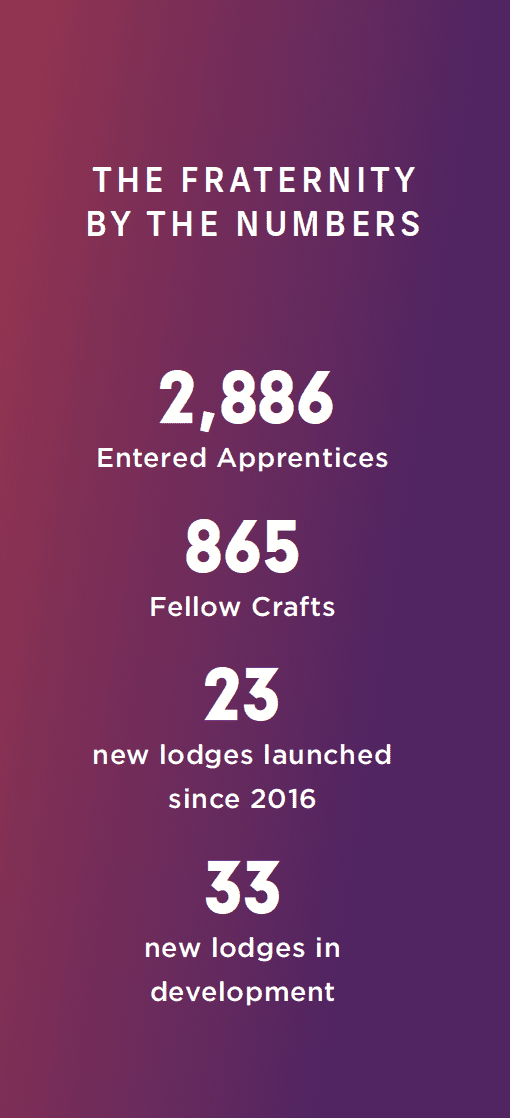
The ritual is what differentiates Freemasonry from other social clubs—providing members with a deep connection to both the craft and fellow members.
Each year, the fraternity recognizes Masons who demonstrate extraordinary command of a different part of the ritual. In 2019, the award was given for expert delivery of the perambulation of the third degree.
Division I Individual: Joshua Cusing, Burlingame No. 400
Division II Individual: Sean Metroka, Nevada No. 13
Division III Individual: Jesse de la Cruz, San Leandro No. 113
Division IV Individual: Scott Morrison, American River No. 795
Team: Thomas A. Farr and Charles M. Heckendorf Jr., Modesto No. 206
Division V Individual: Conor Moorman, Atascadero No. 493
Team: Wilbert Andrew Little and Gary Adkinson, Channel Islands No. 214
Division VI Individual: Chris Abiva, Sunnyside No. 577
Team: Dan P. Manalansan and Amador R. Cruz, Bellflower No. 320
Division VII Individual: Kelly Gilliam, Reseda No. 666
Team: Nolanel Yabut and Irving Rosenbloom, Elysian No. 418
Division VIII Team: Johnny Wells and James Morgan, Big Bear No. 617
Division IX Individual: Sean Mantucca, Irvine Valley No. 671
Looking for candidates to step into the leadership line, organize community outreach, and confer degrees? They may already be on your lodge’s rolls—as suspended members. Thanks to an ambitious new program of restoration, the fraternity is aiming to bring these suspended members back into the fold. Here, an outline of how it works:
NOVEMBER 2019
Individual lodges were given lists of all their suspended members eligible for restoration. Lodges vote during stated meetings whether or not to adopt the restoration resolution, which is voluntary. Lodges that vote to support restoration return their lists of suspended members to Grand Lodge, either amended or as is.
JANUARY 2020
Grand Lodge staff reach out to all suspended members the lodges approved and invite them back for a flat $100 fee. By paying the fee, these members are considered in good standing for the 2020 year. Estimates are that as many as 2,500 members could be restored through the program statewide.
MARCH–OCTOBER 2020
Grand Lodge sends follow-up notices to suspended members who didn’t reply to the initial letter. Once Grand Lodge staff connect with these members, they update any pertinent contact information in the iMember system and alert the lodge. Grand Lodge sends the funds directly to each lodge.
JUNE 2020
Per capita for each lodge is calculated and invoices are sent to lodges. Reinstated members are included in the per capita calculation for the lodge.
FALL 2020
As dues for 2021 come up, restored members are required to make payments to their lodge just as any other member is.

Finally, the California Masonic Memorial Temple is host to its first dedicated lodge room.
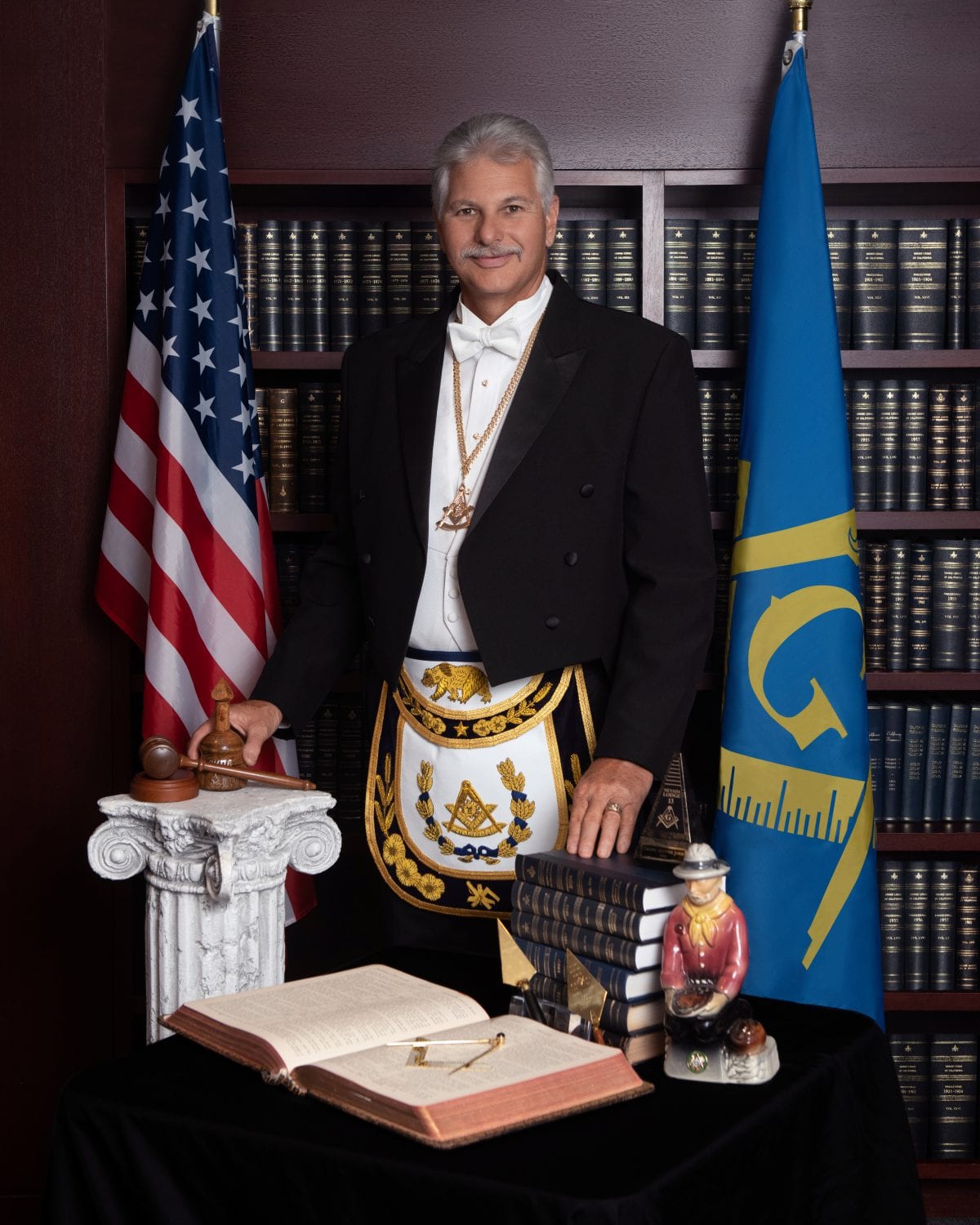
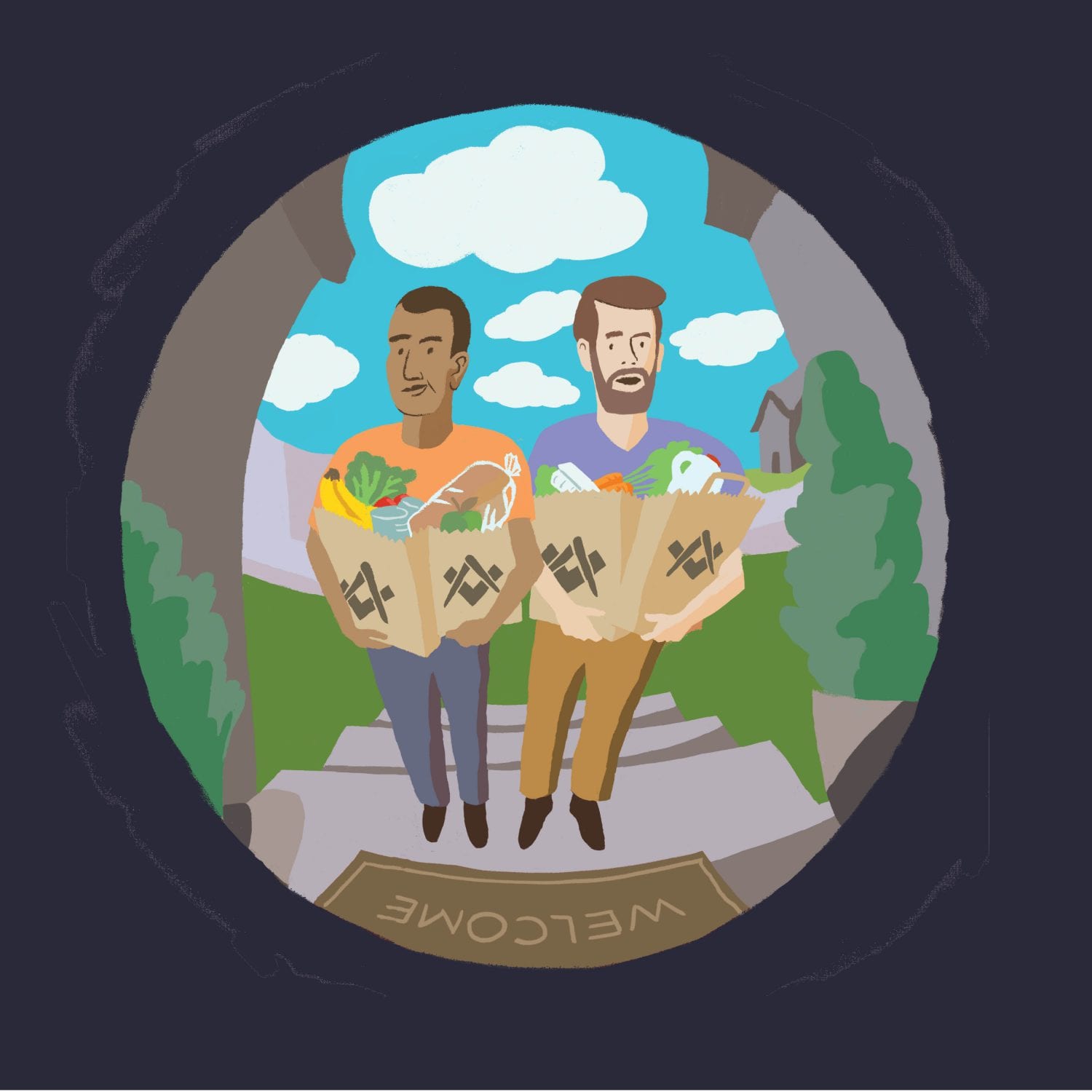
The Masonic Outreach Service turns its sights on an underserved part of the state: the Central Valley.